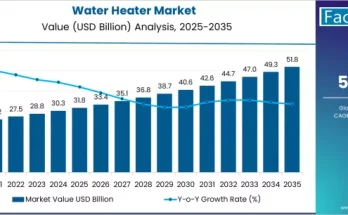Sustainable Fashion – The Precursor to Growth for Alpaca Fiber Market
Alpaca fiber is witnesses a greater demand over wool in the textile industry being a natural fiber that provides more warmth minus the scratchy texture like wool. It makes alpaca clothing warm, soft, and extremely comfortable. The influx in demand for alpaca fiber in the textile and fashion industry can be attributed to the increasing awareness about the high quality and sustainability of alpaca fiber. The alpaca fiber market is witnessing high growth mainly due to the upsurge in demand for alpaca fiber fleeces and other types of fashion accessories made with alpaca fiber.
With the rapidly increasing number of alpaca fiber fashion stores across the world, the alpaca fiber market is expected envisage astounding growth in the upcoming years. As the trend of offering highly sustainable and eco-friendly garments and apparel accessories is gaining popularity in the fashion apparel industry, the alpaca fiber market is growing at a rapid pace with the surging demand for warm and soft alpaca fiber.
Manufacturers Focus on Alpaca Nutrition to Improve the Quality of Alpaca Fiber
While the alpaca fiber market is expanding at an impressive growth rate, market players are aiming to produce alpaca fiber with even better quality to attract more consumers. As high genetic merits can lead to producing large quantities of high-quality alpaca fiber, manufacturers in the alpaca fiber market are putting efforts into providing nutritious feed to alpacas.
Nutrition makes a significant impact on the health and reproduction capabilities of alpacas, and ultimately helps to obtain softer and high-quality alpaca fiber. Leading manufacturers and distributors in the alpaca fiber market are investing heftily in alpaca nutrition in order to be able to offer the finest quality of alpaca fiber and gain a competitive edge in the alpaca fiber market.
Peruvian Alpaca Breeders Followed by Australians Gear Up to Boost the Growth of the Alpaca Fiber Market
The Ministry of Agriculture and Irrigation (MINAGRI), Peru, recently stated that Peru is the largest alpaca fiber producer in the alpaca fiber market, as around 3.8 million alpacas in the country – which is 87% of the world’s alpaca population. The annual production of alpaca fiber in Peru stands for over 4,501 tons and the Peruvian alpaca fiber exports surpassed US$ 68 million by the end of 2017. The Ministry of Foreign Trade and Tourism (Mincetur) stated that the country’s alpaca exports increased by over 110% in 2017 within a span of one year, with the rise of over 14% average per kilogram in the export price.
Peru continues to the world’s largest producer as well as exporter in the alpaca fiber market and the main destinations for the Peruvian alpaca fiber exports remain China and Italy. To capitalize on various business opportunities in the alpaca fiber market, the Ministry of Foreign Trade and Tourism (Mincetur) launched the luxury fashion brand “Alpaca del Perú” for the sale of high-quality alpaca fiber garments and accessories.
After Peru, the alpaca breeders in Australia are adopting innovative strategies to establish a stronger position in the alpaca fiber market. With the increasing alpaca population in Australia, the Australian Alpaca Association president predicts that the number will reach 1 million by the year 2021. The Australian alpaca fleeces are witnessing high demand across the fashion industry, especially in China.
The alpaca market is witnessing rapid growth as alpaca fiber manufacturers in South Australia target a majority of Chinese clothing manufacturers. Owing to the quality of Australian alpaca fiber and the strict health standards established by the Australian government, demand for Australian alpaca fiber is likely to improve in the upcoming years. By exporting to the ever-expanding consumer goods markets like China, the alpaca fiber market in Australia is expected to account for a higher share in the global market in the upcoming years.


